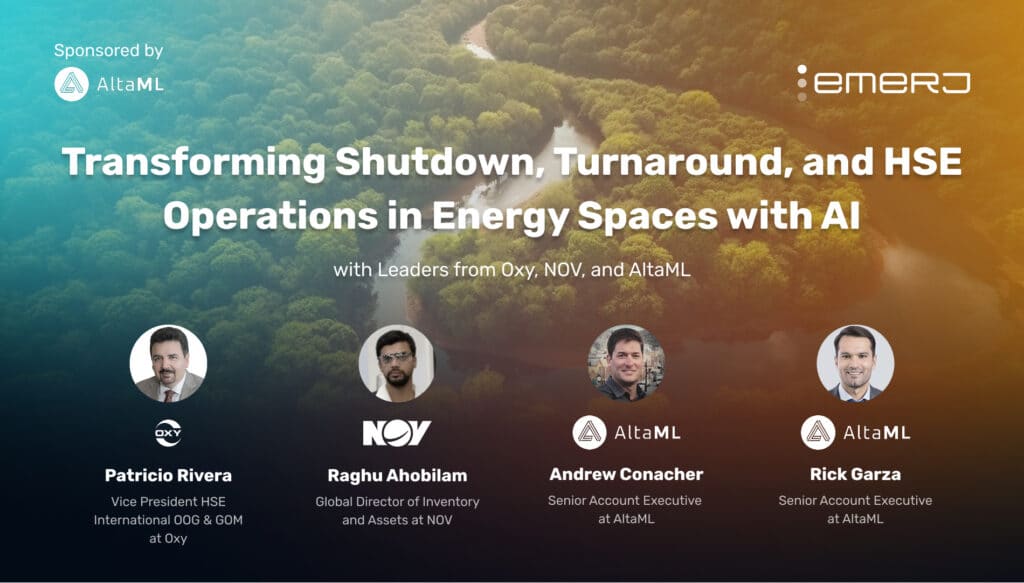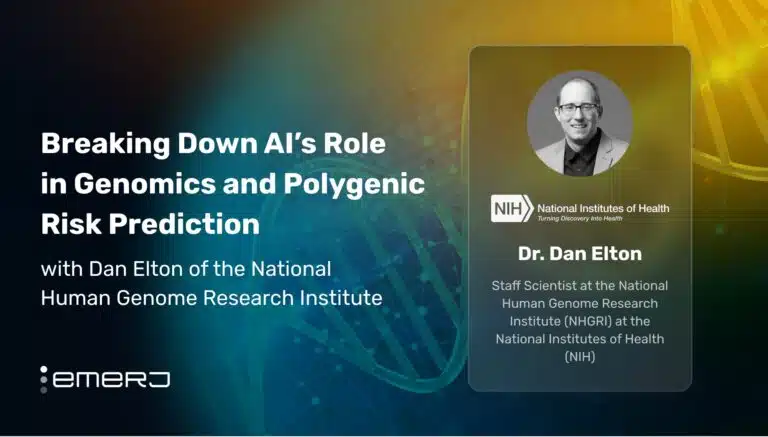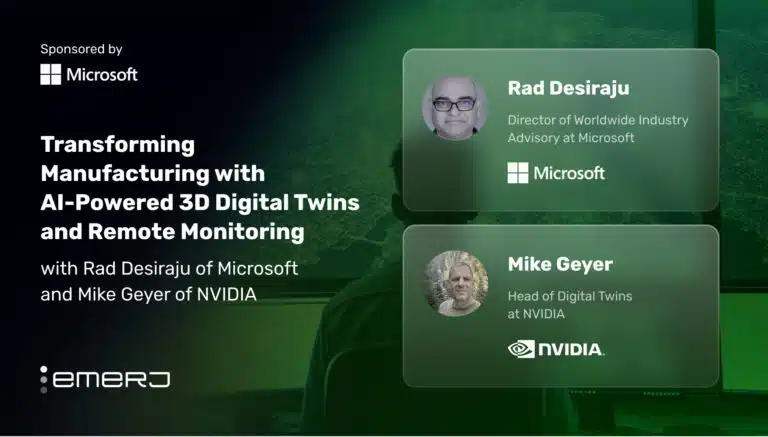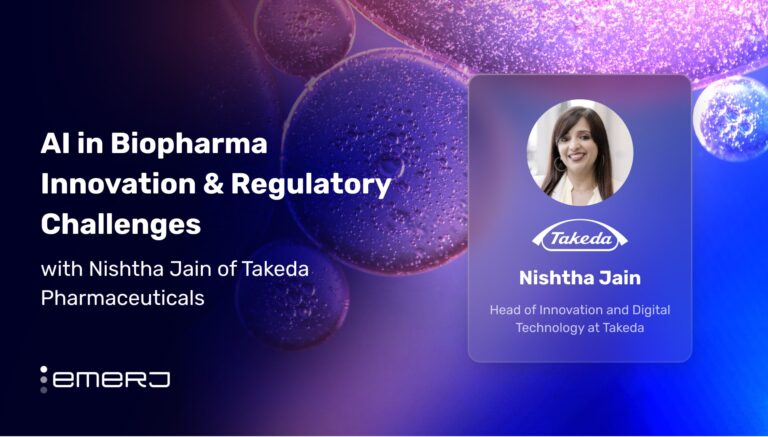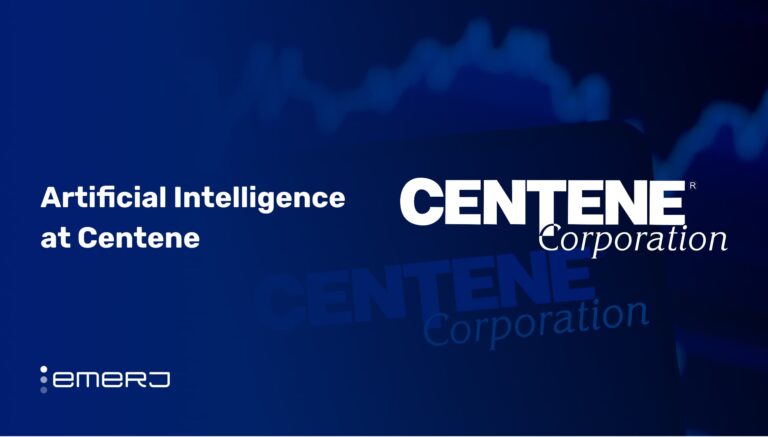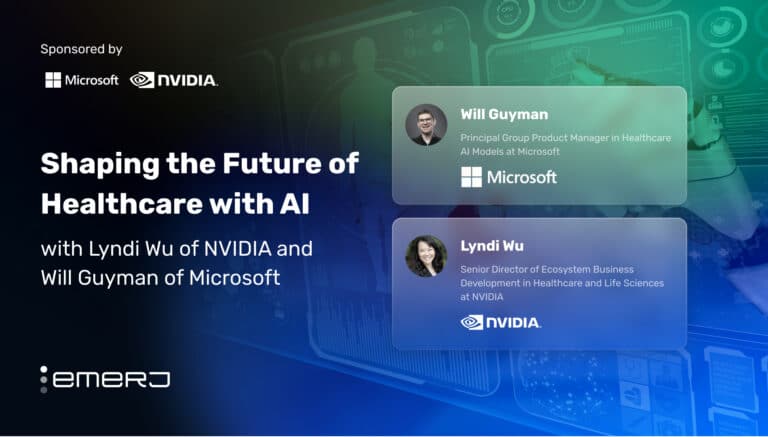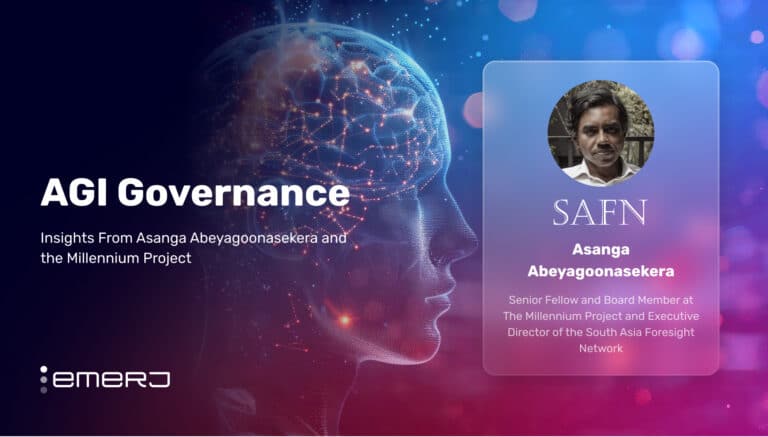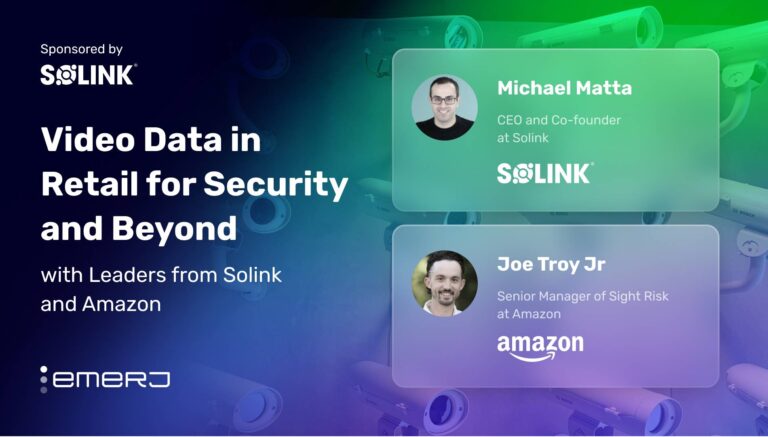This interview analysis is sponsored by AltaML and was written, edited, and published in alignment with our Emerj sponsored content guidelines. Learn more about our thought leadership and content creation services on our Emerj Media Services page.
Shutdowns, turnarounds, and outages (STOs) are among the most resource-intensive and risk-laden operations in the energy sector. These planned interruptions are essential for maintenance, upgrades, and regulatory compliance and often involve thousands of assets, compressed timelines, and elevated safety risks.
According to a report from the Harvard Kennedy School’s Environmental and Energy Law Program, the complexity of refinery operations and the potential for pollutant releases during maintenance underscore the need for rigorous planning and control systems.
Planned outages in energy operations can incur substantial costs, especially those involving major generation assets. According to an EPRI Journal case study, a 7EA hot‑gas‑path inspection (HGPI) on a GE gas turbine typically costs between $750,000 and $1,000,000 per outage, with additional technical oversight expenses of $100,000–$150,000 per unit.
These planned maintenance activities are a major contributor to turbine unavailability — accounting for over 70% of downtime in fleets that rely heavily on gas turbine units.
All the while, workforce safety remains a critical concern. The U.S. Bureau of Labor Statistics reports that roles central to STO execution in “installation, maintenance, and repair” occupations had a fatal injury rate of 8.8 per 100,000 workers in 2022, more than double the all-industry average of 3.7.
Emerj recently hosted executives from across the energy sector in a series of conversations to help quantify these challenges and offer counsel to other industry leaders on how best to deploy AI for solving them. Executives interviewed include Raghu Ahobilam, Global Director of Inventory and Assets at NOV, together with Andy Conacher, Senior Account Executive at AltaML and Patricio Rivera, Vice President of HSE International at Oxy with Rick Garza, Senior Account Executive at AltaML.
Each guest delivered unique perspectives on overcoming data fragmentation, legacy system challenges, and safety risks through innovative AI-driven approaches. Together, they shared ideas on how deploying advanced solutions in these areas can improve decision-making, reduce downtime, and enhance workforce safety in complex operational environments.
The following analysis examines four critical insights from the conversations:
- Integrating legacy systems to unlock operational visibility: By connecting siloed ERP platforms, historical safety reports, and sensor data across legacy environments, AI enables a unified risk view that streamlines safety briefings and accelerates decision-making during shutdowns.
- Customizing AI agents for domain-specific workflows: To make agentic AI effective in energy operations, enterprise leaders must involve subject matter experts early to define agent roles around real business needs — ensuring solutions reflect operational realities and deliver measurable impact.
- Starting with clear goals and pilots to protect business continuity: Defining the problem upfront and running small-scale pilots helps energy companies introduce new technologies without disrupting critical operations or causing costly failures.
- Using AI to transform existing safety data into actionable insights across roles: AI processes large volumes of safety observations to support predictive hazard modeling and deliver customized information that enhances human judgment at all organizational levels.
Guest: Raghu Ahobilam, Global Director of Inventory and Assets, NOV
Expertise: Lean Six Sigma, strategic leadership, supply chain optimization
Brief Recognition: Raghu Ahobilam is the Global Director of Inventory and Assets at NOV, a leading provider of technology solutions to the global energy industry. With over a decade of experience at NOV, he has held various leadership roles, including General Manager and Lean Six Sigma Leader. Raghu holds a Master of Science from Texas Tech University and certifications in Six Sigma and Lean methodologies.
Guest: Andy Conacher, Senior Account Executive, AltaML
Expertise: Artificial Intelligence, observability, pre-sales engineering, technical consulting, cloud solutions
Brief Recognition: Andy Conacher is a Senior Account Executive at AltaML, where he focuses on observability and technical consulting for AI and cloud solutions. He has significant experience in pre-sales engineering and bringing innovative technologies to enterprise clients. Andy is also active in the tech community, delivering webinars and presentations on AI topics, including agentic systems, generative AI, and observability.
Guest: Patricio Rivera, Vice President of HSE International, Oxy
Expertise: Health, safety and environment leadership, global HSE risk management, environmental information management systems, stakeholder engagement, ESG compliance, operational safety in upstream oil and gas
Brief Recognition: Patricio Rivera serves as Vice President of HSE International for Oxy’s Oil & Gas and Gulf of Mexico operations, based in Houston — overseeing HSE strategy across global upstream sites. He led the development and implementation of a comprehensive Environmental Information Management System (EIMS) for Oxy operations on Ecuador’s Block 15, enhancing environmental monitoring, audit readiness, and impact mitigation in sensitive tropical ecosystems. He has contributed to the preparation of HSE Management Systems for a variety of Oil and Gas business units. Patricio holds a PhD in Occupational Health and Safety and MBA in Oil and Gas and MSc in Environmental Engineering.
Guest: Rick Garza, Senior Account Executive, AltaML
Expertise: Emissions management platforms, AI-powered solutions in energy, energy sector go-to-market strategy, mechanical engineering, applied geoscience
Brief Recognition: Rick Garza is a Senior Account Executive at AltaML, where he helps energy companies adopt AI solutions to address operational efficiency, regulatory compliance, and emissions reduction. He brings over a decade of experience in the oil and gas sector, having led go-to-market efforts at Bridger Photonics, ComboCurve, and RS Energy Group. His background bridges technical engineering knowledge with the commercialization of emerging technologies across the energy value chain.
Integrating Legacy Systems to Unlock Operational Visibility
Andy Conacher of AltaML opens his conversation with Raghu Ahobilam of NOV by pointing out that while the energy sector has made strides in digital transformation, organizations still struggle to make legacy data usable for AI applications. He suggests that AI’s ability to connect disparate formats and historical systems could radically streamline some of the most time-intensive safety workflows, especially during critical operations like STOs:
“One particular key safety activity during shutdowns is the daily or shift change briefing, where the safety officer has to communicate the risks for that day. This process can take hours because the officer needs to review past incident reports, work orders, and other historical documentation, some going back years or even decades.
If that knowledge isn’t already in their head, it’s a huge manual research effort. AI can connect to these legacy safety systems and regulatory databases to generate a briefing in seconds, turning what used to be a laborious task into an efficient, timely, and far more accurate process.”
— Andy Conacher, Senior Account Executive at AltaML
Raghu echoes the challenge and elaborates on the broader difficulty of achieving interoperability across fragmented systems. He emphasizes that many energy companies, particularly those that have grown through mergers and acquisitions, are left with a patchwork of legacy software and siloed databases. AI, he argues, presents a viable path to coherence.
Raghu goes on to explain that consolidating half a dozen ERP systems or making sense of traditional sensor data across generations of tools is not just a technical challenge — it’s a barrier to operational visibility. He describes how AI can integrate disparate systems, uncover cross-functional safety patterns, and present a more holistic view of risk — enabling teams to take more informed action faster.
“You have different sets of data, different sources, because over the years or decades, a lot of organizations in this industry have gone through mergers and acquisitions. Each brings their own legacy systems, software, and tools. When these systems remain siloed, it’s hard to do any meaningful analysis. But with AI, it becomes possible to integrate all these data sets and look at things more holistically than ever before.”
— Raghu Ahobilam, Global Director of Inventory and Assets at NOV
In response, Andy then outlines three key ways AI can streamline the safety briefing process and surface relevant risk signals during STOs:
- Connecting siloed legacy systems to pull data from decades of reports, work orders, and databases.
- Automatically surfacing relevant safety insights for daily briefings during high-risk events like STOs.
- Reducing time-intensive manual research and enabling faster, more accurate risk communication.
Customizing AI Agents for Domain-Specific Workflows
Andy highlights the emerging role of AI agents — specialized, task-focused AI tools designed to handle distinct parts of complex workflows — as a key driver for operational efficiency in energy. He explains how these agents can automate specific functions, from querying databases and researching equipment issues to managing procurement tasks, effectively acting as digital specialists embedded within organizational processes:
“Imagine having multiple AI agents working together — one pulling data from your inventory system, another researching troubleshooting steps for a failing component, and yet another placing orders for replacement parts automatically.
This agentic approach doesn’t just speed up the work; it fits seamlessly into existing workflows, providing actionable insights and reducing manual handoffs.”
— Andy Conacher, Senior Account Executive at AltaML
Raghu agrees and points out that these AI agents become most valuable when tailored to the unique needs and operational contexts of the business. He stresses the importance of involving subject matter experts to define precise agent capabilities aligned with specific business problems, such as seasonal sales patterns or maintenance schedules.
“In order for AI agents to truly add value, they need to be customized around the workflows and knowledge that matter.
It’s not just about general automation, but about building agents that understand the nuances of our operations — from ordering specialized drilling components to managing inventory timelines — so we can realize measurable wins quickly.”
— Raghu Ahobilam, Global Director of Inventory and Assets at NOV
Andy concludes by emphasizing the importance of a flexible AI framework that can integrate different AI capabilities — like language models, computer vision, and database queries — to deliver tailored solutions that improve safety and operational agility.
Starting With Clear Goals And Pilots To Protect Business Continuity
During his conversation with Rick Garza of AltaML, Patricio Rivera, Vice President of HSE International at Oxy, emphasized that HSE must be tightly integrated with the core business strategy to ensure continuity and resilience — particularly during critical periods like shutdowns and turnarounds. Rather than treating safety as a parallel function, his approach starts with developing an HSE Business Plan that directly supports the company’s operational continuity.
The HSE Business Plan evolves from basic compliance to full integration with business strategy. As maturity increases, the plan aligns safety goals with operational priorities, using clear timelines, measurable objectives, and a balanced focus on technology, human factors, and cultural engagement. At its most advanced stage, it becomes a strategic tool — enabling proactive risk management, continuous improvement, and sustained business continuity.
Patricio explained that while the adoption of new technologies is vital to modernizing safety programs, human factors must remain central. His planning framework goes beyond traditional risk models by incorporating a “Circle of Control, Influence, Concern, and Adaptation”, enabling Oxy to better allocate effort and attention across multiple safety dimensions. This approach strengthens accountability and clarity across all organizational levels — from frontline workers to senior leadership.
“The importance of safety in the oil and gas industry cannot be overstated. Technology gives us new tools, but people remain at the heart of everything. Our challenge is to modernize our programs without losing the human factor. That’s why our planning is not just about digital transformation — it’s about aligning HSE with how the business runs.”
— Patricio Rivera, Vice President of HSE International at Oxy
A key example of this philosophy is the Green Day Program at Oxy, an AI-driven initiative built on the AWS analytics cloud platform. While safety programs traditionally focus on learning from incidents — identifying root causes after something has gone wrong — the Green Day Program shifts attention to learning from success.
“We’ve identified a new opportunity: learning from our Green Days — days when everything goes right. These are the days without losses, when our systems perform as designed and our people behave safely and effectively. This proactive approach allows us to learn from success, not just react to failure.”
— Patricio Rivera, Vice President of HSE International at Oxy
The Green Day initiative analyzes large volumes of operational and behavioral data to identify the conditions, behaviors, and system factors that contribute to safe, uninterrupted production. These insights are being used to build a forecast model that informs safety leadership and front-line decision-makers alike — empowering the entire organization to recognize and promote the conditions that drive strong safety performance.
“By analyzing our best-performing days, we aim to replicate and scale those conditions across the board. This isn’t just predictive safety — it’s strategic alignment of human behavior, technology, and systems toward continuous, safe operations.”
— Patricio Rivera, Vice President of HSE International at Oxy
This philosophy — integrating AI with grounded, human-focused planning — reflects Patricio’s broader vision for transforming HSE from a reactive compliance function into a proactive, value-generating pillar of business resilience.
Rick adds that embedding safety intelligence earlier in operational workflows is essential to shifting safety management from a reactive compliance activity to a proactive, data-driven process. He highlights how AI-generated insights can be integrated into daily decision-making without disrupting critical operations — allowing companies to run focused pilots that build confidence and deliver incremental improvements in safety.
Their approach is designed to reduce the likelihood of incidents even by small margins, which cumulatively builds organizational resilience and continuous improvement capacity.
Using AI to Transform Existing Safety Data Into Actionable Insights Across Roles
Patricio highlights that one of AI’s most valuable contributions is its ability to harness the vast amounts of existing safety data — often underutilized or fragmented — and turn it into meaningful, actionable intelligence. Rather than relying on new data collection initiatives that risk overwhelming personnel, the focus is on extracting insights from the data already collected.
For example, his team processes roughly 14,000 safety observations per week from a single asset, drawing lessons not only from incidents but also from “green days,” or days when safety performance was exceptional.
He stresses that AI tools should augment human judgment rather than replace it, delivering tailored insights to the right users at every level — from frontline operators to executives. By structuring data around specific equipment, vendors, and roles, AI can identify risk patterns that humans alone might miss, enabling more precise and proactive safety interventions.
“We want to make sure the insights generated by AI are clear and relevant to each person’s role. It’s about delivering the right information at the right time to support decisions — not flooding people with data. The AI helps us see patterns across thousands of observations and connects those insights directly to operational realities. This empowers everyone, from the field to the boardroom, to act more effectively on safety.”
— Patricio Rivera, Vice President of HSE International at Oxy
Rick complements Patricio’s view here by explaining how predictive models trained on historical safety data can also create a “Window of Hazard”. This allows operators and managers to anticipate hazards before they manifest, transforming safety management from reactive to predictive.
“Capturing and analyzing thousands of past safety observations lets us train AI systems to recognize when conditions align with known risk patterns. This ‘Window of Hazard’ isn’t just theory, it’s a practical tool that guides real-time decisions and planning. By embedding these insights into daily workflows, we can help teams prevent incidents before they happen.”
— Rick Garza, Senior Account Executive at AltaML
Together, both Rick and Patricio’s insights underscore the strategic advantage of turning existing safety data into role-specific intelligence. Their shared approach not only preserves institutional knowledge but also ensures safety efforts are dynamic, actionable, and aligned with organizational priorities — driving continuous improvement across complex energy operations.

